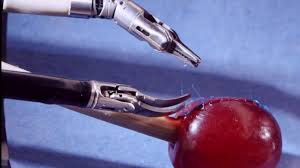Laparoscopic Cholecystectomy with Meltzer Knot in mass ligation HD
Add to
Share
101 views
Report
1 month ago
Description
Laparoscopic cholecystectomy is the gold standard for the surgical management of gallbladder diseases, including symptomatic cholelithiasis, chronic cholecystitis, and gallbladder polyps. Over the years, surgical techniques have evolved to improve safety, reduce operative time, and enhance postoperative outcomes. One such advanced technique involves the use of the Meltzer knot in mass ligation, particularly in high-definition (HD) laparoscopic settings. Overview of the Technique The Meltzer knot is a specialized knot used to secure ligatures efficiently, allowing for mass ligation of structures such as the cystic duct and cystic artery in laparoscopic cholecystectomy. When combined with HD laparoscopic visualization, it provides superior clarity of Calot’s triangle, minimizing the risk of injury to the common bile duct or surrounding vascular structures. Advantages Enhanced Safety: The Meltzer knot ensures a secure ligation of the cystic duct and artery, reducing intraoperative bleeding and postoperative bile leaks. Efficiency: Mass ligation using a Meltzer knot allows simultaneous ligation of multiple structures, reducing operative time. Precision: HD laparoscopic visualization enhances anatomical clarity, helping surgeons identify variations in biliary anatomy. Reduced Complications: Minimizes the risk of clip slippage, cystic duct stump leak, or inadvertent injury to nearby structures. Surgical Steps Patient Preparation: Standard laparoscopic positioning with general anesthesia. The abdomen is insufflated with CO₂ to create a working space. Port Placement: Usually, four ports are placed—one umbilical port for the camera, and three working ports for instruments. Exposure: The gallbladder is retracted to expose Calot’s triangle clearly under HD visualization. Dissection: Meticulous dissection of the cystic duct and artery is performed to prepare for ligation. Mass Ligation with Meltzer Knot: A Meltzer knot is applied to the cystic duct and cystic artery as a single mass ligature. The knot is tightened and secured to ensure hemostasis and prevent bile leakage. Gallbladder Removal: The gallbladder is dissected off the liver bed and removed via the umbilical port. Closure: Port sites are closed, and the patient is monitored postoperatively. Clinical Significance In complex cases, such as acute cholecystitis or fibrotic gallbladders, conventional clipping may be challenging. The Meltzer knot in mass ligation provides a reliable alternative, ensuring secure closure and reducing operative stress. When paired with HD laparoscopic systems, this technique significantly improves visualization and surgical outcomes. Conclusion Laparoscopic cholecystectomy with Meltzer knot in mass ligation HD represents a modern, efficient, and safe approach to gallbladder surgery. By combining advanced ligation techniques with high-definition visualization, surgeons can achieve superior patient outcomes with minimal complications, making it a valuable skill in advanced laparoscopic practice.
Similar Videos






